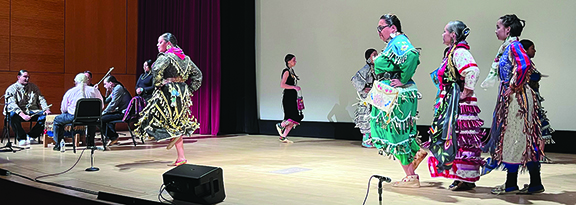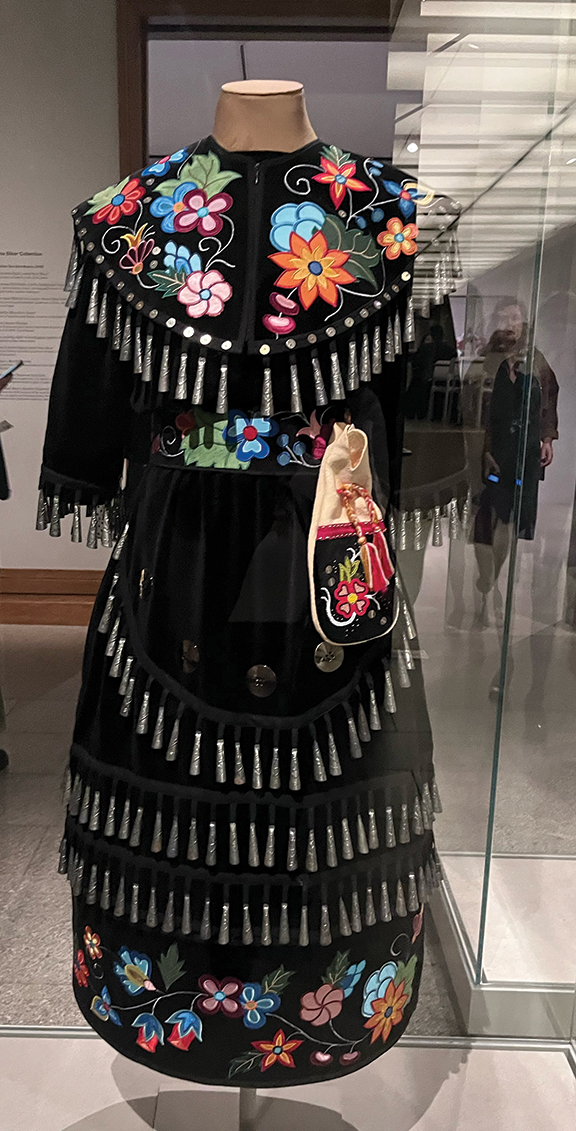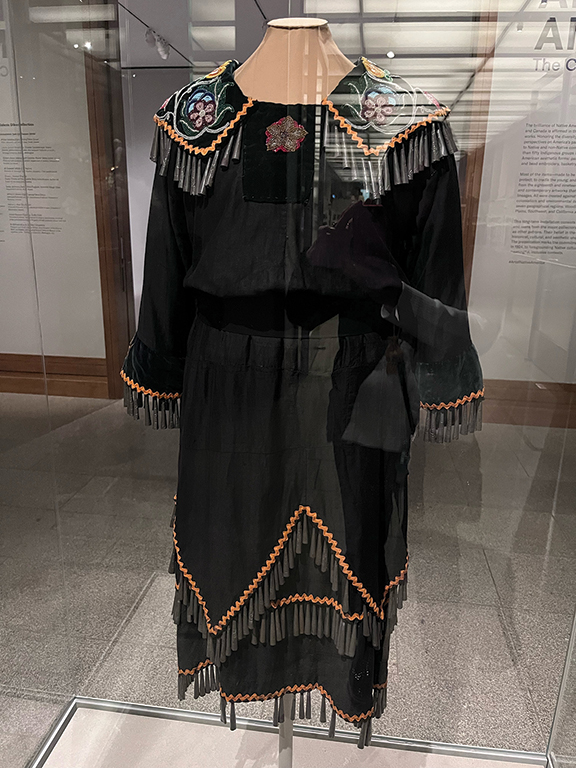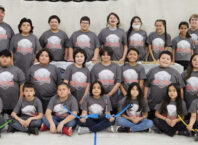
By Zibiquah
The Metropolitan Museum of Art, better known as The Met in New York City, hosted a most welcome addition to its numerous exhibitions and displays in honor of Native Heritage Month. The Sound of Healing, Native American Art, Music and Dance during Pandemics, was brought together by Dr. Brenda Child (Red Lake Ojibwe) historian and author; and Patricia Marroquin Norby, (Purepecha, from Mexico). Norby has been the associate curator of Native American Art for the Met since 2018.
A lively Jingle Dress dance exhibition and Native singing drummed through the audience in the Grace Rainey Rogers Auditorium at the Met on November 5 – a beautiful and historic accomplishment. The Met is the largest museum in the United States and boasts over seven million visitors in one year.
The Met is a massive, breathtaking place with huge stairs and fountains on each side. After asking people where to get a ticket and how much it cost, I finally found the kiosk and bought my ticket, using a senior discount – it pays to be old sometimes. I passed through the ticket taker and walked in the direction shown on my map. The auditorium was housed in the middle of the Egyptian mummies and statues exhibit, which I thought was fascinating. I took a seat and waited for the show to begin.

Dr. Child introduced the program and explained the inspiration for the exhibit. Since Dr. Child’s mother was a jingle dress dancer, she talked enthusiastically about the spread and popularity of the Jingle dresses throughout the twentieth century. The jingle dresses were used as protests for the Idle No More Movement and the Standing Rock protests. In the 1980s, the popularity of jingle dress dancing spread quickly throughout the US and Canada. In many contest powwows today the Jingle Dress has its own dance category. There were eight jingle dress dancers from northern Minnesota accompanied by the Silvercloud Singers.
According to Dr. Child, the Jingle Dress originated during the 1918 influenza pandemic from a Ojibwe girl who was sick and had a dream of a dress with metal cones in which the tinkling of the cones became a source of prayer and comfort. It is believed that the sound of the metal cones soothed and healed the soul. Native people often use songs, drums and dancing for healing as well as for the obvious aesthetic purposes.
There was a sit down discussion with Dr. Child and Norby, with musician Robbie Robertson (Six Nations Mohawk/Cayuga) joining virtually later in the discussion.
The talented musician Robbie Robertson joined the conversation and talked about his appreciation of the music, culture and Native storytelling. His mother was Mohawk and Cayuga, from the Six Nations Reserve. Robertson grew up listening to the elders tell stories, there was one elder who used a pole and pounded it on the ground for emphasis.
Robertson was influenced greatly by this man and told his mom he was going to be a storyteller. True to his dream he became a great songwriter, musician and author and has worked with Bob Dylan, Martin Scorsese and the Staple Singers to name a few. Robertson produced and performed in The Last Waltz, a film that has become a major classic among music films.
After the show ended I made my way to the rest of the exhibit, which included two jingle dresses on display in the American wing. Once again, I had to ask people where it was since the Met is massive. I was surrounded by great Egyptian mummies, statues and art that made me stop and look at these marvelous pieces of art. I finally found the small room which housed the dresses and other Native clothing pieces from various tribes from a private collection.

As I wandered through the collection, I wondered how much of the art in this fabulously huge place, The Met, was in fact stolen. According to John Oliver, who did a show on museums inspired by Kim Kardashian, in the past five years The Met has received nine search warrants and 37 pieces of art were seized. While I enjoy and believe that museums are a good way to teach history and cultural art, I do not condone the way in which many museums obtain some cultural art works. Overall, museums have gotten a bit more inclusive in their practices by hiring more people of color with cultural knowledge, but the museum practices of receiving stolen property needs to be addressed more aggressively.
Programs like the Jingle Dress exhibit and dancers are moving museums in the right direction. I hope that there can be more programming and more Native curators hired in the future and not just for one month of the year.
“Our dances and traditions have always been used as sources of strength and revitalization. . . I was told by a spiritual elder that spiritual power moves through the air. Art is as necessary as medicine in pandemic times,” said Dr. Child.
This exhibit is so relevant and timely and definitely deserves to be at the Met.






